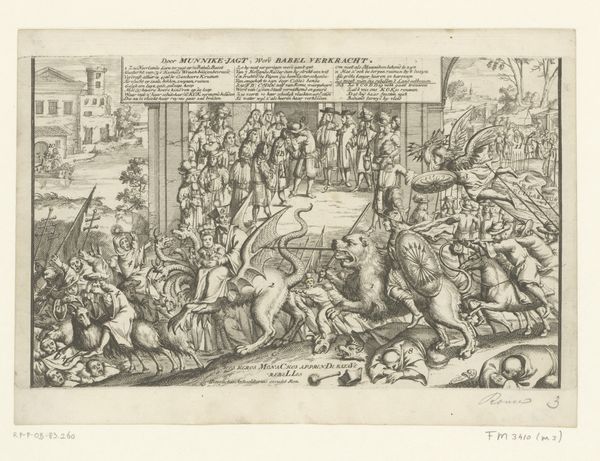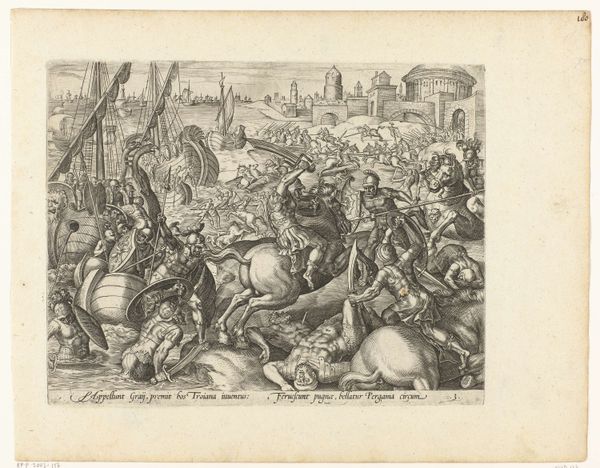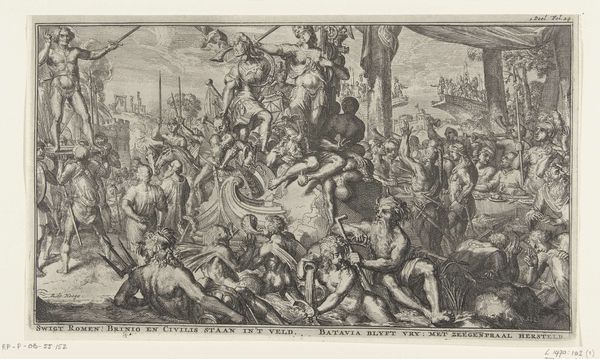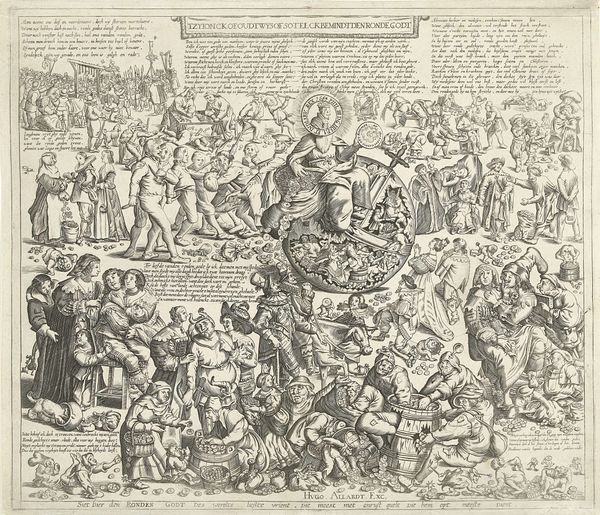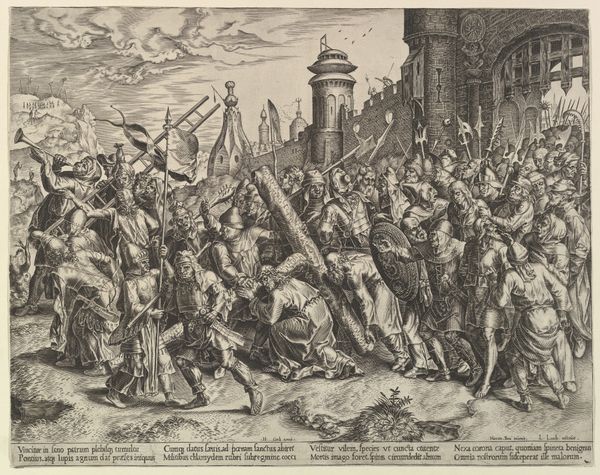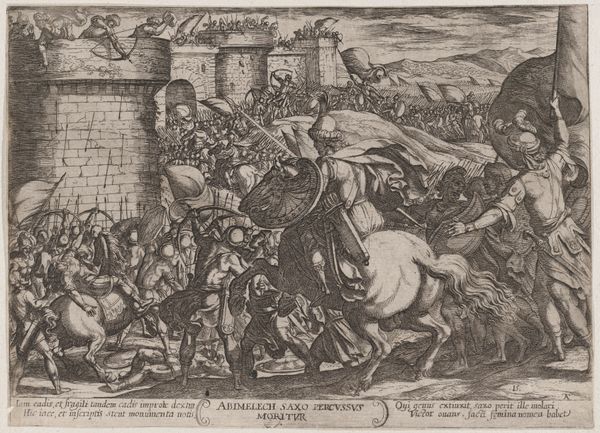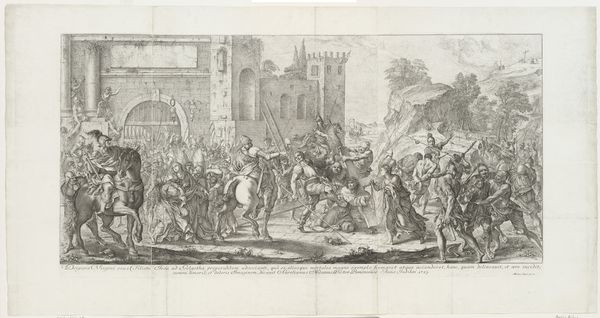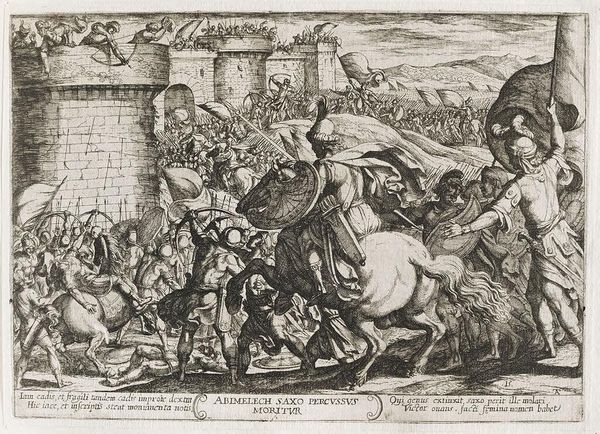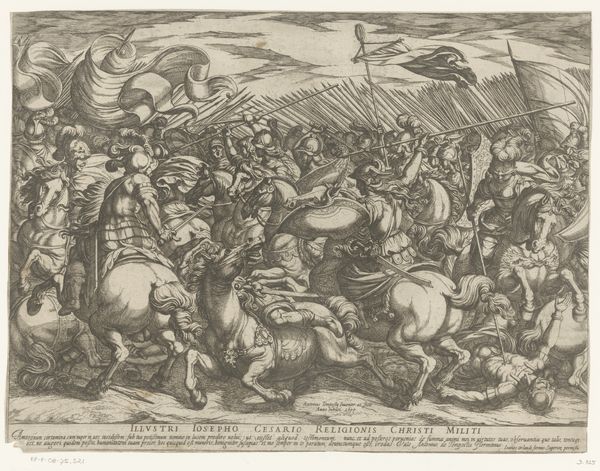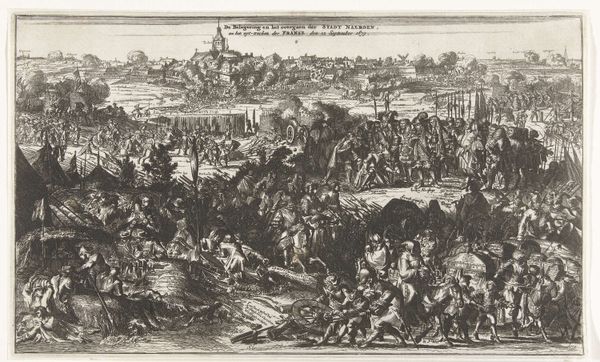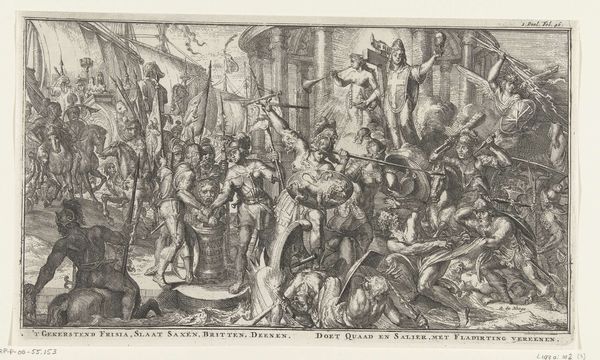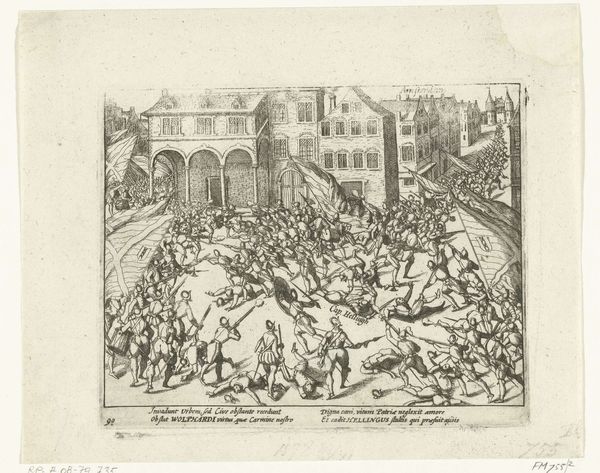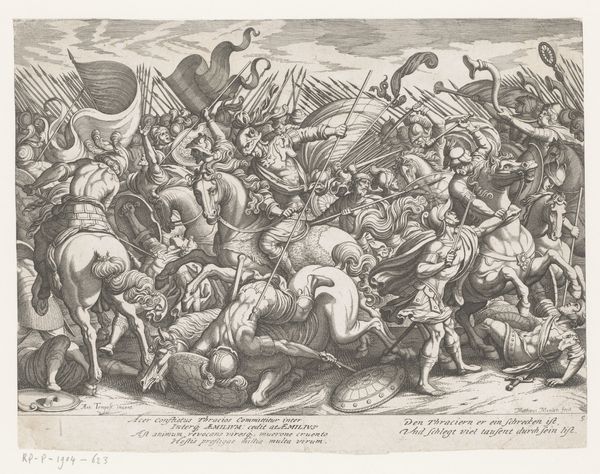
print, intaglio, engraving
#
narrative-art
# print
#
intaglio
#
figuration
#
11_renaissance
#
cityscape
#
history-painting
#
engraving
Dimensions: height 301 mm, width 411 mm
Copyright: Rijks Museum: Open Domain
Editor: We’re looking at “The Capture of Carthage,” an engraving from around 1560 to 1580 by Barbara van den Broeck. The chaos is striking! What structural elements jump out to you? Curator: Indeed. The composition is dominated by a tightly packed mass of figures, creating a strong sense of tension. Notice the way van den Broeck uses linear perspective to create depth, drawing the eye towards the burning city in the background. Editor: The city does seem so far away but the flames are so present. Can we assume this relates to the symbolism or just style? Curator: Semiotics might tell us something interesting. Observe how the artist uses contrasting tones to delineate forms and create a sense of drama. The dynamic interplay between light and shadow underscores the violence and upheaval of the scene. The dense, almost claustrophobic arrangement, forces our attention to the center where conflict and death reign. It appears the artist has mastered intaglio for detailed effect. Editor: So, it’s less about a faithful depiction of Carthage and more about the principles the artwork employs? Curator: Precisely. It's about how van den Broeck manipulates line, tone, and composition to communicate a feeling of chaos and destruction. Ask yourself: does this image provide more than just a document? Is the medium used to make a statement? Editor: It's interesting to consider the intention of an artist from so long ago through the structural components. Thank you for clarifying the formalist perspective. Curator: It is important to recognize how composition can communicate themes without relying on extraneous contextual cues. Thank you, this has been enlightening for me too.
Comments
No comments
Be the first to comment and join the conversation on the ultimate creative platform.
